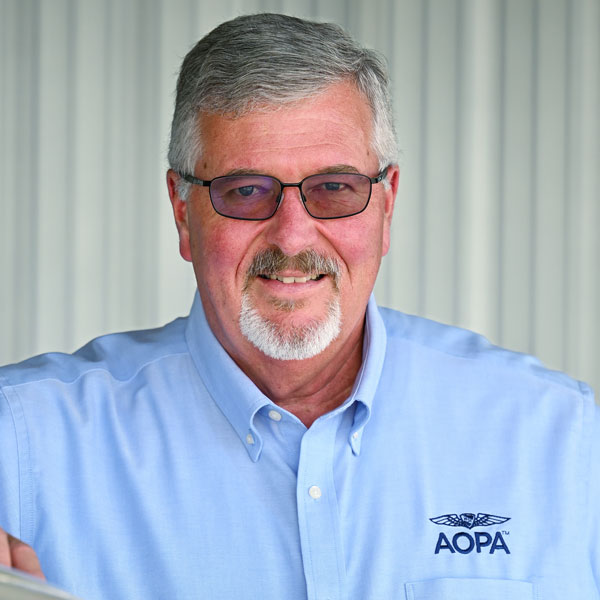Annual recurrent training
Do what’s required and then some
Four T–6 Texans slowly take the active runway at Williston Municipal Airport (X60), with the leader on the downwind side of centerline and “Dash 2” on the upwind side and slightly behind the lead’s wing line.
Aircraft three and four mirror the positions of the leader and number two. With final engine and configuration checks complete, the pilot in aircraft number two nods her head, indicating she is ready, and the flight leader responds with a big head nod and simultaneously releases the brakes. Throttle slowly advances to 30 inches of manifold pressure, 6 inches less than the 600-horsepower Pratt and Whitney R-1340 nine-cylinder radial typically uses for takeoff power, and both aircraft accelerate to 80 mph rotation speed. The pilot in the number two aircraft locks her eyes on the leader’s aircraft, never looking inside the cockpit as she finds and actuates the gear retract lever and slowly retards the propellor to 2,000 rpm. The pilot in the number three aircraft is leading the second “element,” and as soon as he sees air under the tires of the lead’s aircraft, executes the exact same takeoff sequence for him and his wing pilot. The lead element executes a slow climbing left turn so the second element can use radius of turn to “rejoin” after takeoff. The four-ship formation joins in “fingertip strong right” configuration and proceeds to the formation practice area.
This entire sequence—from taking the runway to joining the four Texans in a fingertip formation—is done with hand signals only and zero radio communications. Every movement and procedure were briefed and executed in accordance with North American Trainer Association (NATA) formation procedures and the Formation and Safety Team (FAST) Formation Knowledge Guide.
This is how my annual recurrent training started a few days before Sun ’n Fun. Even though I added a single-engine seaplane rating in September 2024 and had completed an instrument proficiency check in the Beechcraft Bonanza a few months earlier, I was rather rusty in T–6 formation flying. I was current by the book, but I knew I wasn’t proficient. To maintain formation proficiency, FAST and NATA require a written and signed formation proficiency report to be filed each year to maintain a valid formation card through the following year. I hadn’t met that proficiency requirement in 2024, hence the need to formally requalify with a NATA check pilot. Over the years, I had accumulated more than 1,200 hours in a T–6 but hadn’t flown a T–6 for about seven months, so I was not about to trust the muscle memory I had previously enjoyed in the T–6. In fact, I was very rusty in the perishable skill of four-ship formation flying.
My self-designed recurrent syllabus was admittedly overkill, but it succeeded in getting me proficient again in the T–6. It included a refresher flight with a T–6 CFI to practice stalls, break turns, aileron rolls, and three trips around the pattern to full stops. Then I completed two training flights in a four-ship formation with an instructor in my back seat, followed by a checkride. I absorbed all the experience and tips from the formation instructors and check pilots who attended the NATA Williston Formation Clinic, and networking with more than 30 T–6 pilots was invaluable (and fun!).
This recurrent training is not required by the FAA to keep me current in a T–6 but is required if I intended to fly in waivered airspace in formation at an airshow. The federal aviation regulations prescribe specific recurrent training requirements for pilots operating under FAR Part 91. They must satisfy Part 61 recurrent training requirements, which only consists of a minimum of one hour of ground training and one hour of flight training, every 24 months. This 24-month flight review requirement is reset if a new rating is added. For pilots operating under Part 121 (scheduled airlines) and Part 135 (charter operators), recurrent training is prescribed and must include weather, crew resource management, emergencies, and certain levels of written, oral, and flight competency checks.
The value of recurrent training from a well-run type-club cannot be overstated. NATA, ably led by Larry “Lumpy” Lumpkin, is the type club for T–6, T–28, P–51, and B–25 aircraft and serves more than 1,200 members. NATA is one of 17 signatory organizations under the FAST umbrella, which is a worldwide educational organization dedicated to teaching safe formation flying in warbirds. Other clubs with excellent formation training programs include the Red Star Pilots Association and the T–34 Association.
If you’d like to kick-start a flight review or recurrent training, start by participating in the National Pause for GA Safety and check out the incredible resources available at gasafe.org (see “National Pause for GA Safety”).
Stay sharp and fly safe. 



